Keep Moving
decoding the patterns of human migration
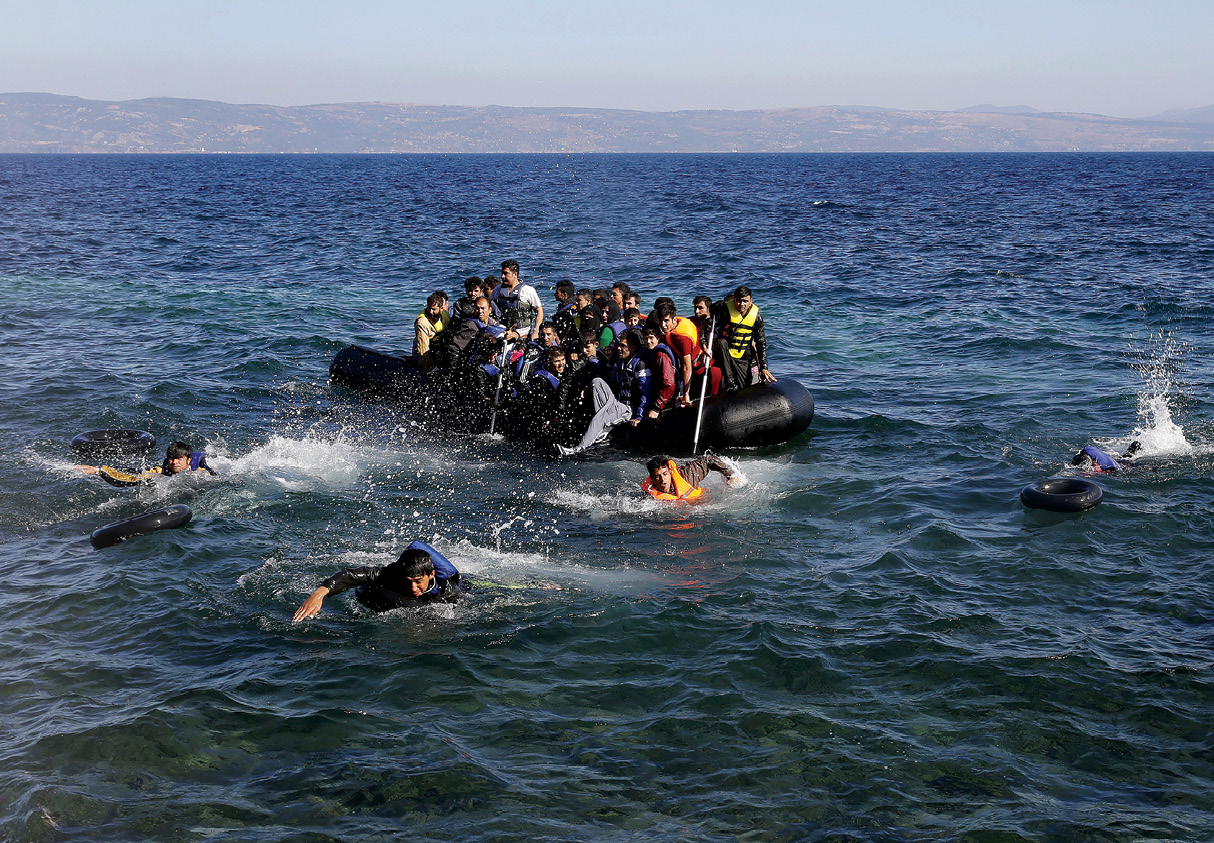

migration is as much a search for opportunities as a flight from hardship.
Around the globe, millions of people are on the move, leaving their homes to pursue a better way of life or to flee war or persecution. Munk School researchers and students examine the immediate challenges and deeper causes that motivate migrants to seek a new place on the planet.
Education
In
Action
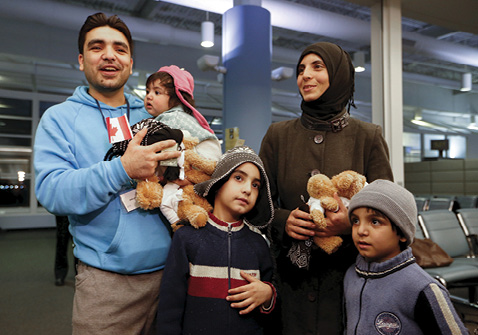
Inside Syria
Nousha Kabawat had just completed a Fellowship in Global Journalism at the Munk School when she was recruited by the award-winning PBS television program Frontline to help produce a feature-length documentary on the Syrian civil war. Broadcast in October 2015, Inside Assad’s Syria examined the plight of everyday people trying to carry on their lives with some semblance of normalcy in a stressful, perpetually dangerous war zone.
In addition to her academic credentials, which also include a Master’s degree in conflict analysis and resolution, Kabawat brings deep personal conviction to her focus on Syria. Born in Canada to Syrian immigrants, she spent much of her childhood in Damascus. Today, as head of youth programming for the Syrian Centre for Dialogue and Reconciliation in Toronto, she works with refugees inside and outside Syria, educating and empowering children in the hope that they’ll one day play a role in rebuilding a proud nation ravaged by conflict. With her newly honed journalistic skills, the young activist is better equipped to tell their stories – and to turn her passionate beliefs into action.
Welcome Home
In the recent flight of refugees from the Syrian conflict, as with many past migrations from war-torn regions, the response from those willing to help has understandably focused on getting vulnerable people safely away from an imminent threat. The next priority – which grows increasingly urgent as more and more displaced people are crowded into squalid, supposedly temporary camps – is where they can hope to go. And even when countries step forward to offer some of the refugees new homes, there often remains a question that no one has had time to fully answer: What happens when they arrive?
What happens when they arrive?
This is the challenge addressed in “Arrival Cities,” one of the Capstone Projects developed for the MGA program in 2015–2016. Second-year students examined urban centres worldwide that have accepted large numbers of refugees – and immigrants generally – and are now integrating these newcomers into existing communities and neighbourhoods. Examining the way this influx is managed sheds light on how cities adapt to change and evolve over the long term.
In analyzing the range of urban responses around the globe, students looked for insights that were particularly relevant to Canadian cities, viewed through the lens of the Toronto experience. They were guided in their investigations by faculty advisor Mark Guslits, an architect and urban planner who, as Chief Development Officer for Toronto Community Housing, helped lead the regeneration of Regent Park in the city’s downtown east side – home to thousands of refugees and immigrants, and considered one of the finest examples of mixed-income urban communities in North America.
Research
Leadership
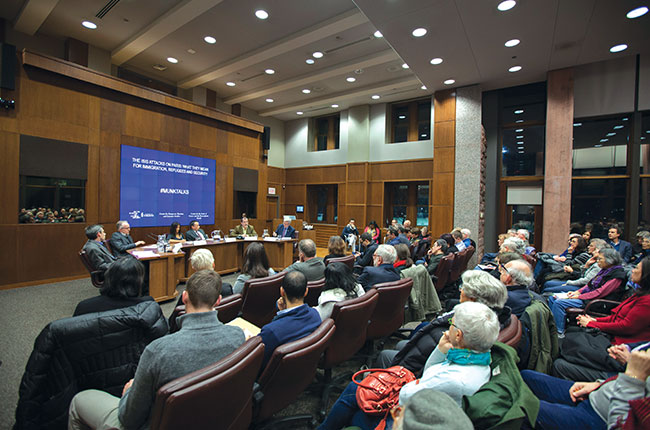
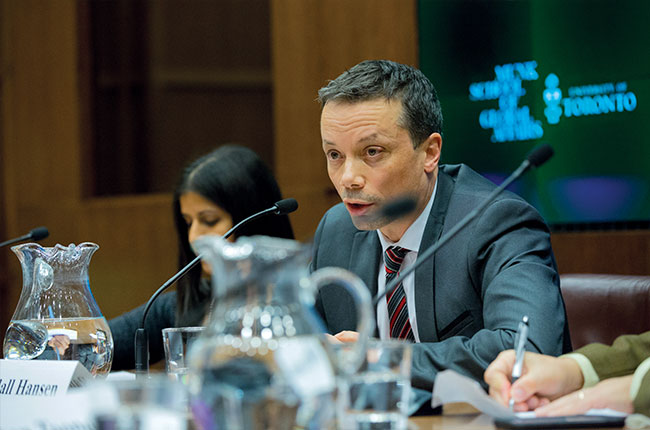
Paris and Beyond
Following the January 2015 terrorist attacks in Paris and the Île-de-France region, police, political leaders and terrorism experts were left searching for answers as to why this ruthless brutality had erupted and what could be done to protect against future outbreaks. Some of the more insightful answers were captured in an anthology published just three months later, After the Paris Attacks: Responses in Canada, Europe and around the Globe. Edited by Prof. Stephen Toope, Director of the Munk School, and Prof. Ed Iacobucci, Dean of the U of T Faculty of Law, the book has since been widely cited by policy-makers, researchers and practitioners in the areas of counterterrorism, security, justice and multiculturalism. Among the book’s contributors were two Munk School faculty members who are recognized worldwide for their studies of immigration and the challenges faced by societies struggling to become more pluralistic as they integrate immigrant communities.
Prof. Jeffrey Reitz is Director of the Robert F. Harney Program in Ethnic, Immigration and Pluralism Studies, in which he holds the Robert F. Harney Chair. His research on the social, economic and political experiences of immigrant and ethnic populations has focused in particular on comparing the experience of Muslim immigrants in France and Canada. Within that broad scope of interest, Prof. Reitz has investigated topics ranging from the integration of Muslim women in Quebec and France (including the French head scarf ban) to the long-term economic integration of Canada’s immigrant communities.
Prof. Randall Hansen, who holds a Canada Research Chair in Immigration and Governance, is Director of the Centre for European, Russian, and Eurasian Studies at the Munk School. A frequent media commentator on various aspects of migration, both voluntary and forced, Prof. Hansen pursues a wide range of research interests, including the impact of public opinion on immigration and citizenship, and the need to develop a practical employment strategy in tandem with immigration policy.
Public
Engagement

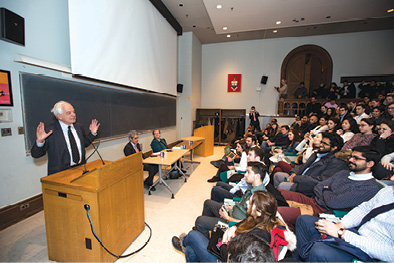
What Can Canada Do?
In September 2015, photos appeared online showing the lifeless body of three-year-old Alan Kurdi lying face down on a Turkish beach. Quickly circulated via social media, the disturbing images captured worldwide attention, galvanizing public sympathy for the predicament of Syrian refugees with an urgency that four years of news reporting had not managed to achieve.
Within days the Munk School had assembled a panel of distinguished academics, journalists and activists to examine the root causes of the crisis, along with the differing responses of EU member states – for example, Germany’s willingness to open its borders to many of the millions of refugees fleeing across Europe, in contrast to the restrictive measures imposed by Hungary. On Sept. 16, the panel met at the Munk School for a public discussion, “The Refugee Crisis: What Can Canada Do?” moderated by Distinguished Senior Fellow Brian Stewart, a former foreign correspondent with CBC Television.
The panellists explored potential roles for Canada in helping to alleviate the crisis, including accelerated acceptance of Syrian refugees. At the same time, experts cautioned that while the crisis in Syria had rightly generated headlines, it was just one facet of a much larger problem encompassing more than 50 million refugees and displaced persons across many areas of the world. As Prof. Randall Hansen summed it up: “The crisis has to be solved where the refugees are – in the global south.”
Newcomers Welcome
“It’s nothing to be ashamed of – it’s something to be proud of – that we’re not taking only people with PhDs or seeking out those who are innovative; we’re taking the most vulnerable.” This was one of the key messages delivered by The Hon. John McCallum, federal Minister of Immigration, Refugees and Citizenship, to a panel on the Syrian refugee crisis co-hosted by the Munk School’s G7 Research Group in February 2016. The Minister underlined that in welcoming an initial 25,000 refugees, Canadians were not only showing their humanitarian spirit but also enhancing the country’s longer-term prosperity.
“If you look at past waves of refugees, sooner rather than later they give back, and it becomes a paying investment for Canada. They quickly get jobs and thrive. Especially now, with an aging population, we need them more than ever.” – The Hon. John McCallum
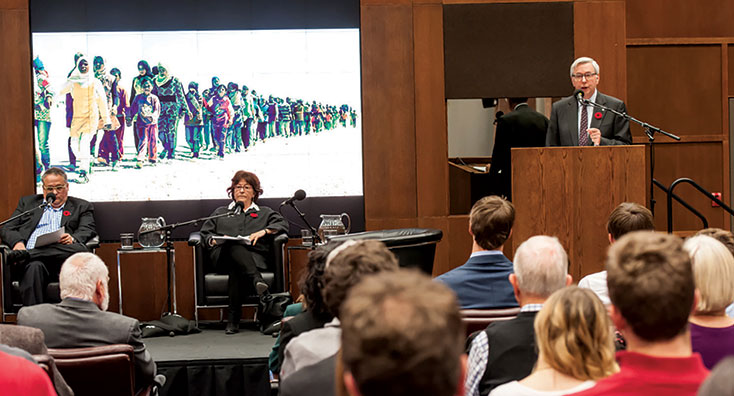
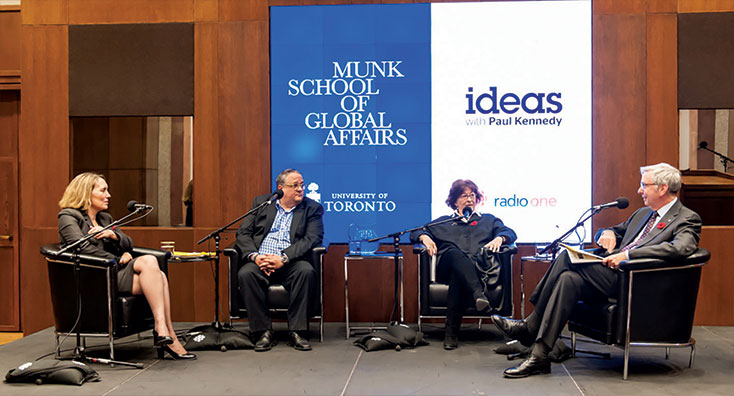
Rights and Obligations
The media images are all too familiar: an endless stream of people fleeing desperate situations in their homelands with the hope of finding safe harbour elsewhere. We’re witnessing the largest exodus since the Second World War, as refugees from the Middle East to Africa to South Asia leave their countries of origin to escape conflict, oppression and economic distress. But can all such migrants receive the same kind of support? And in more affluent countries that offer a better quality of life, where do our obligations begin and end?
In late 2015, the CBC Radio program Ideas partnered with the Munk School to present a two-part episode focused on the refugee crisis and the extent of Canada’s responsibility to help displaced people. Moderated by Prof. Stephen Toope, Director of the Munk School, the first part tried to untangle the moral, legal, economic and political arguments surrounding the issue of cross-border migration.
Among the renowned experts who shared their insights was the Honourable Louise Arbour, former justice of the Supreme Court of Canada, former UN High Commissioner for Human Rights and an international prosecutor of war crimes. Justice Arbour’s scope of expertise provided a bridge to the second part of the discussion, which examined the challenges of upholding global justice and protecting human rights in the face of persistent transgressions such as human trafficking, child labour and crimes against humanity.
The two-part episode was aired in December via network radio, streaming and podcast to a Canadian and U.S. audience that averages well over a million listeners weekly. (Listen to part one and part two.)

